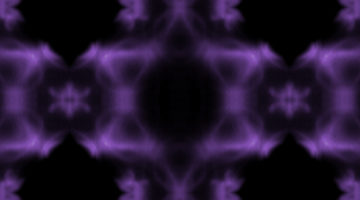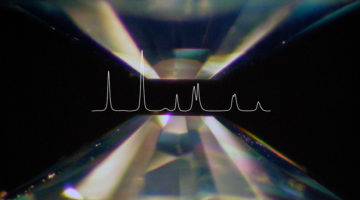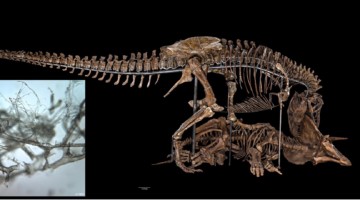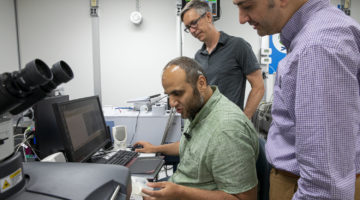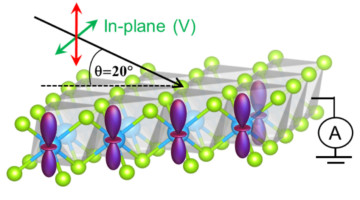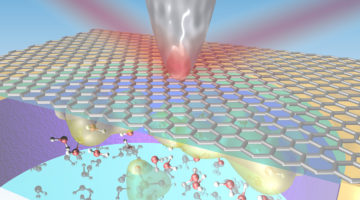Electronic-structure studies showed that both infinitely light and infinitely massive particles coexist in a material with a star-shaped (kagome) crystal lattice. The material’s rich array of electronic behaviors shows promise for future spintronic applications and represents a new frontier for studying exotic phases of matter. Read more »![]()
![]()
ALS Work Using Spectroscopy
These techniques are used to study the energies of particles that are emitted or absorbed by samples that are exposed to the light-source beam and are commonly used to determine the characteristics of chemical bonding and electron motion.
Can Minerals in the Earth’s Lower Mantle Store Water?
Earth is considered a watery planet, simply by virtue of the fact that 71% of its surface is covered by oceans. But researchers have discovered that, in the massive volume of material in Earth’s interior, minerals can serve as an important water reservoir, providing a new perspective on our planet’s water budget. Read more »
Berkeley Lab Helps Reveal How Dinosaur Blood Vessels Can Preserve Through the Ages
A team of scientists used infrared and x-ray imaging performed at the Advanced Light Source to determine the chemical mechanisms that allow soft tissue structures to persist in dinosaur bones—countering the long-standing scientific dogma that protein-based body parts can’t survive more than 1 million years. Read more »
New Catalyst Resists Destructive Carbon Buildup in Electrodes
Key challenges in the transition to sustainable energy can be met by converting CO2 to CO through the use of solid oxide electrolysis cells. But because these can suffer from carbon deposition at the electrodes, researchers have now identified and tested a new, cerium oxide–based catalyst that is more resistant to carbon buildup. Read more »![]()
The Beauty of Imperfections: Linking Atomic Defects to 2D Materials’ Electronic Properties
Two studies reveal surprising details on how some atomic defects emerge in transition metal dichalcogenides (TMDs), and how those defects shape the material’s electronic properties. The findings could provide a more platform for designing 2D materials for quantum information science and smaller, more powerful optoelectronics. Read more »
Scientists Explore Egyptian Mummy Bones With X-Rays and Infrared Light to Gain New Insight on Ancient Life
Researchers from Cairo University worked with teams at the ALS to study soil and bone samples dating back 4,000 years. The experiments are casting a new light on Egyptian soil and ancient mummified bone samples that could provide a richer understanding of daily life and environmental conditions thousands of years ago. Read more »
Anomalous Orbital Structure in Two-Dimensional Materials
Researchers explored how structural distortions of the atomic lattice influence exotic electronic states in two-dimensional transition-metal dichalcogenides (TMDs). Polarization-dependent spectroscopy revealed an unexpectedly large crystal-field splitting of the valence electron states, a result of strong hybridization in metal–chalcogen orbitals. Read more »
Multimodal Study of Ion-Conducting Membranes
Using multiple x-ray characterization tools, researchers showed how chemical and structural changes improve the performance of a novel ion-conducting polymer (ionomer) membrane from 3M Company. The work provides insight into factors impacting the proton conductivity of ionomers used for fuel cells and the production of hydrogen fuel. Read more »![]()
![]()
Infrared Nanospectroscopy at Graphene–Liquid Interfaces
Researchers developed a new infrared approach to probing the first few molecular layers of a liquid in contact with a graphene electrode under operating conditions. The work offers a new way to study the interfaces that are key to understanding batteries, corrosion, and other bio- and electrochemical phenomena. Read more »![]()
![]()
ALS Confirms Mechanism for Improved Fuel Cell Catalysis
Aided by x-ray absorption spectroscopy at the ALS, researchers from Toyota and the University of Akron have uncovered a new catalysis mechanism to improve oxidation-reduction reactions in certain fuel cells by 40%. This enhancement, based on tin oxide, will support efforts to increase fuel efficiency in electric vehicles. Read more »![]()
- « Previous Page
- 1
- …
- 14
- 15
- 16
- 17
- 18
- …
- 30
- Next Page »
